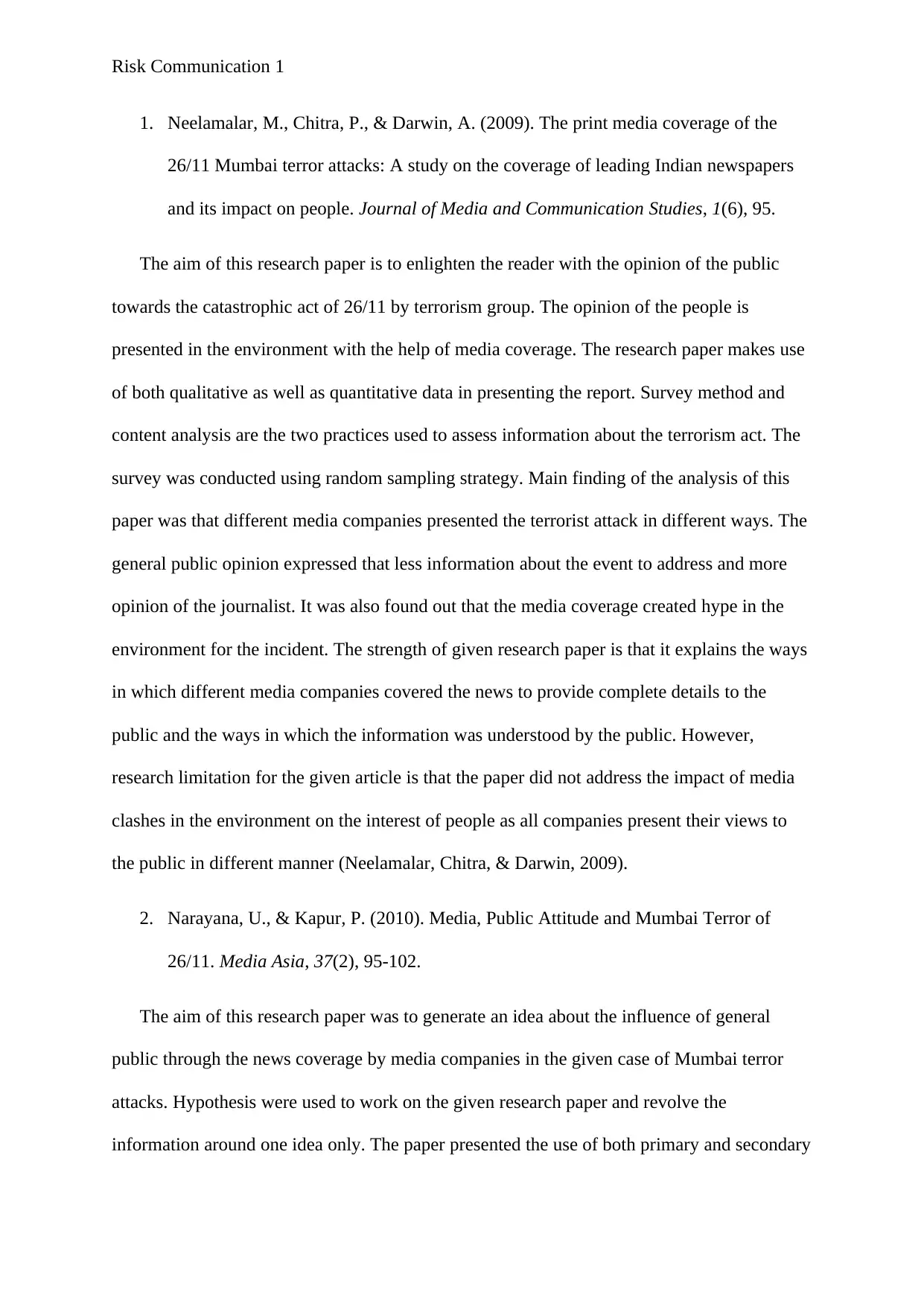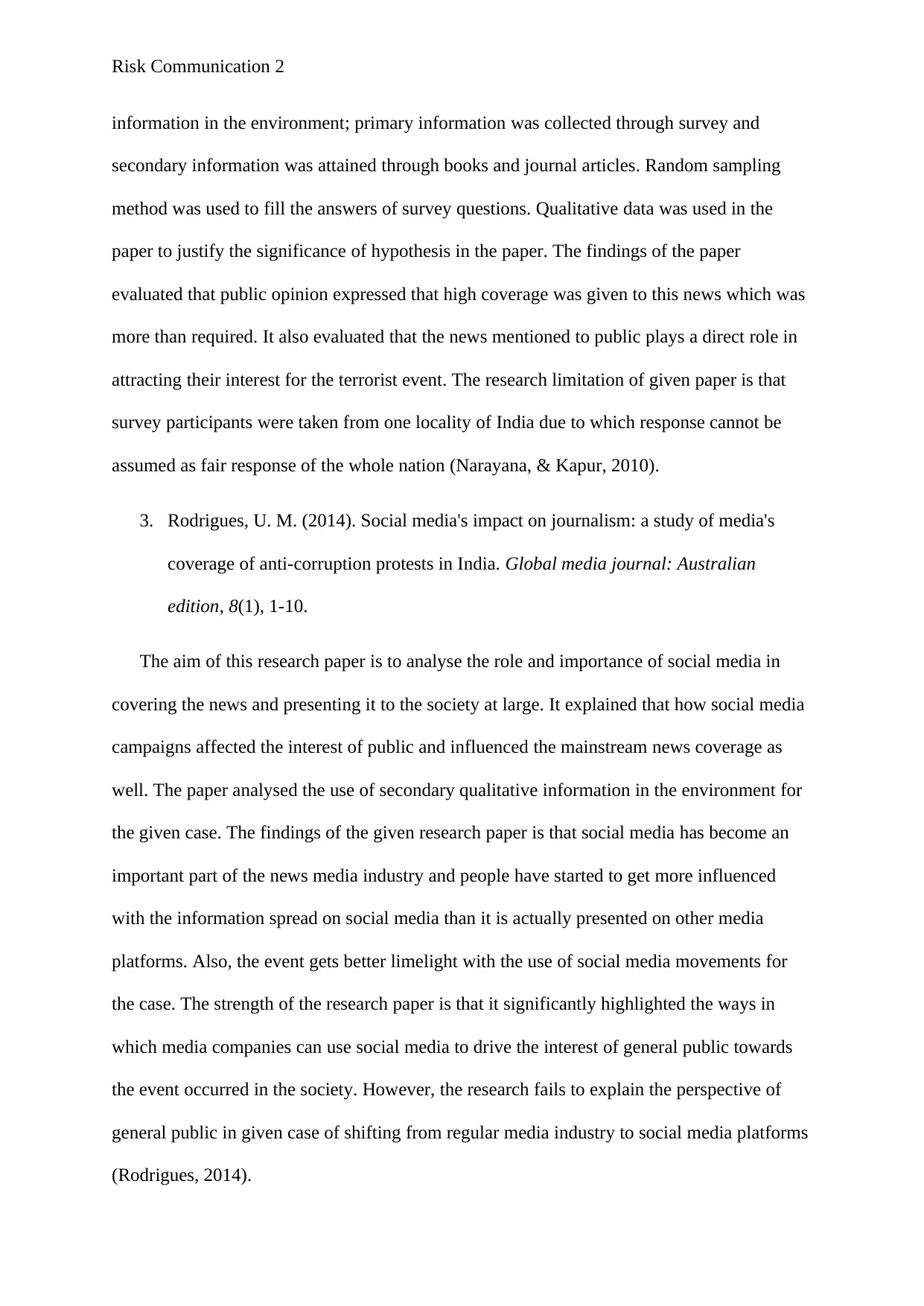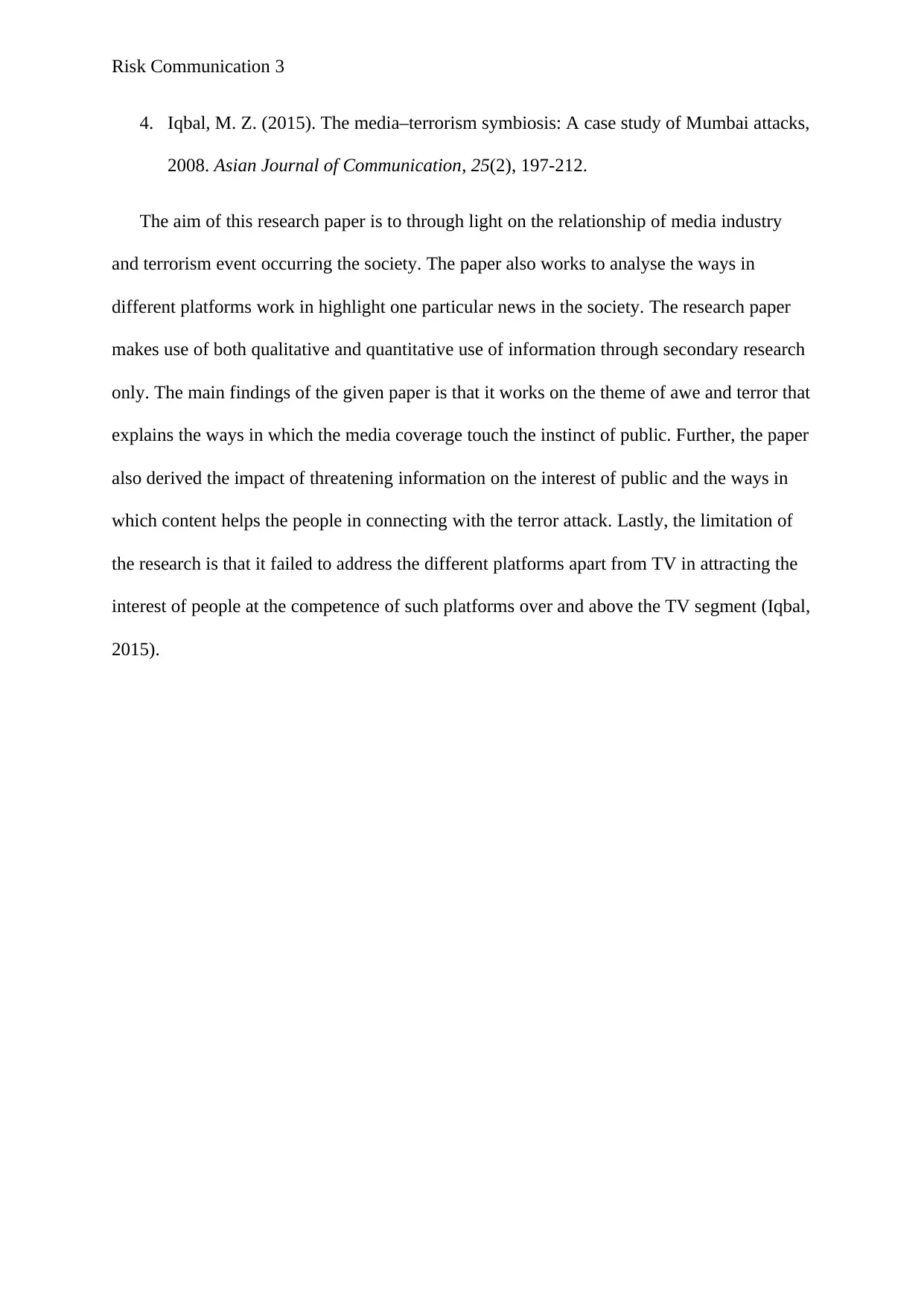Risk Communication: Media's Role in the Mumbai Terrorist Attacks
VerifiedAdded on 2022/08/28
|4
|990
|21
Report
AI Summary
This report examines the media coverage of the 2008 Mumbai terror attacks, analyzing how different media outlets presented the events and the impact on public opinion. The study draws upon several research papers that employed both qualitative and quantitative methodologies, including surveys and content analysis. The findings reveal that media coverage significantly influenced public perception, with varying degrees of information provided by different companies. The research also explores the role of social media in shaping public interest and the relationship between media and terrorism. Limitations of the research include the lack of analysis on the impact of media clashes and the perspective of general public in shifting from regular media industry to social media platforms. The report highlights the importance of understanding risk communication strategies in the context of terrorism and media influence.
1 out of 4





![[object Object]](/_next/static/media/star-bottom.7253800d.svg)